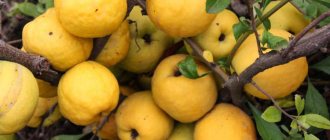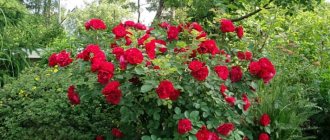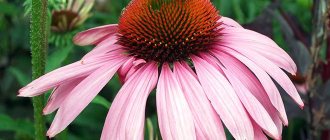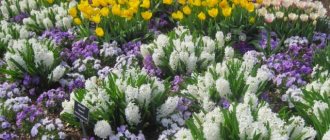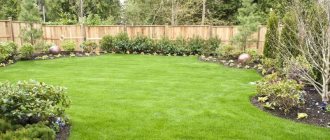When is the use of fertilizer for indoor flowers indicated?
It is not difficult to understand that plants need nutrition. You just need to inspect them regularly and pay attention to any changes in their growth activity or appearance. At the same time, flowers should be fertilized somewhat more often than many housewives think. This is especially true for potted crops located in limited space.
You may be interested in: How and with what to cover strawberries in the garden to prepare them for the winter of 2021 How and when to cover roses for the winter - preparation features and detailed instructions How and with what to cover grapes for the winter in different regions of Russia If the flower really needs additional nutrients , he will definitely “give a signal”:
- slower growth;
- weakness of stems that can stretch;
- blanching and wilting of leaves;
- loss of stems’ elasticity and strength;
- lack of abundant (or any) flowering;
- decreased immunity, which, in turn, is manifested by frequent plant diseases;
- falling leaves;
- the appearance of suspicious, unhealthy spots on the surface of the flower.
The above deviations are a clear sign of a lack of vitamins. But it is better not to bring plants to this state, since it is not always possible to return them to a full life, even with the help of potent drugs and fertilizing.
Houseplants in autumn
Lighting
The most important reason for changes in the viability of houseplants is a change in light conditions. With shorter days, plants use up the nutrients they accumulated over the summer much faster. Central heating turned on in the fall also does not promote flowering and improve the appearance of plants.
For many indoor plants, the lack of lighting can be compensated for artificially. You need to light the lamp only when it is completely dark outside the window. In total, natural and artificial lighting should be at least ten to twelve hours.
Temperature
The heat regime is an individual parameter for each individual plant species. For example, aucuba, aloe, aspidistra, dracaena, zygocactus, lemon, ficus, cyperus are not at all demanding on the air temperature in the room.
An elevated temperature (+ 15°C) is necessary for warm-blooded indoor flowers: Saintpaulia, anthurium, begonia.
Roses, primroses, fuchsias, camellias, and geraniums need cooler temperatures. But the indoor plant cyclamen does not tolerate heat at all.
Having knowledge about the preferences of indoor plants, you should take into account that on the windowsill during this period the temperature is three to four degrees below room temperature. Hydrangeas, camellias, primroses and geraniums will be comfortable here.
It is recommended to keep indoor roses and cyclamen between frames, where they can rest well, because these plants have a resting phase in autumn-winter.
Attention! Indoor plants do not tolerate drafts in autumn.
When ventilating rooms, be sure to cover indoor flowers with newspapers. Care must be taken to ensure that plants are not exposed to cold air or drafts.
Watering
How to water indoor flowers in the fall? The watering procedure, which at first glance is completely simple, is fraught with secrets. Not all novice gardeners know that abundant and frequent watering in autumn and winter is dangerous for indoor plants.
During this period, the substrate, without having time to dry out at depth, again receives a new portion of moisture, and as a result, the root system rots. Plants may die if appropriate measures are not taken.
Houseplants that sometimes shed their leaves in autumn need to be watered even less often than the main part of indoor plants, but the soil should not be allowed to dry out completely.
Even indoor plants such as cyclamen, gloxinia, tuberous begonia, which do not have above-ground shoots during the dormant period, need to be watered occasionally.
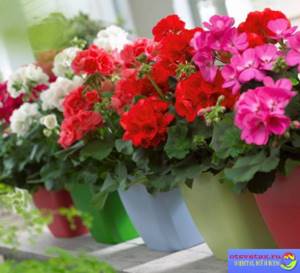
caring for indoor plants in autumn
Water for irrigation must be settled and have a temperature approximately equal to room temperature. Cold water is harmful to plants because it is practically not absorbed by the roots properly, as is boiled water, which does not contain oxygen after boiling.
When watering, it is better to direct the stream closer to the edge of the pot and water carefully so as not to erode the substrate. If the earth mixture is too compacted, it needs to be loosened periodically.
How can you feed house flowers for better growth in spring?
Spring is the period when plants begin to gradually enter the active growing season. It may seem impossible, but indoor flowers, just like people, can suffer from spring vitamin deficiency. Therefore, at this time of year they are especially in dire need of nourishment. You can feed them not only with ready-made store-bought mixtures, but also with fertilizers you prepare yourself.
Types of fertilizers and their features
Fertilizers for indoor flowers are dry and liquid:
- Dry. Such fertilizers are traditionally mixed with the soil. You can sprinkle them on the top layer of soil, but this will make the result incomplete. Fertilizers of this type are good because they gradually release active substances. Thanks to this, you can get a long-lasting and lasting effect.
- Liquid. These are solutions for watering or spraying indoor flowers. They contain all the necessary minerals and vitamins, antioxidants and amino acids. They help destroy pests and cure plant diseases.
- Sticks. This is a type of dry, solid fertilizer. Such fertilizers are simply inserted into the soil at a certain distance from the plant. The root system is fed in portions.
It doesn’t matter what types of fertilizers are used, experts say, what matters is the results obtained. But store-bought fertilizers are sometimes very expensive. Therefore, if the grower does not have the opportunity to purchase them, he can turn to the use of home remedies.
The table below describes several types of dry and liquid fertilizers that can be added to a flower pot with the onset of spring:
| № | Name | Method of preparation and use |
| 1. | Aspirin | To increase the plant's immunity, mix 1 aspirin tablet in 1 water and add 5 ml of castor oil. Shake the solution thoroughly and leave for half an hour. Use for spraying the stems and leaves of indoor crops no more than 2 times a month |
| 2. | Wood ash | For flowers in pots, ash is usually used in the form of a liquid concentrate. It is prepared as follows: 1. 3 tbsp. l. Dilute the ash in a liter of water. 2. Let the fertilizer sit for a week. 3. Flowers should be watered once every 10-14 days. You can make a nutrient substrate for feeding. For this purpose, ash and soil are mixed together in a ratio of 1:5, then the flower is transplanted into the resulting soil. |
The above types of fertilizers are completely natural and easy to use. And most importantly, they cost pennies, unlike artificial mineral mixtures.

Carefully monitor the condition of your plants
Folk remedies for spring feeding
Even products that few people know about the advisability of using them can serve as plant nutrition. This:
- Decoction of onion peels. Perfectly stimulates the growth and flowering of indoor plants. Destroys pests, strengthens the flower’s immunity, fights diseases. Onion peels must be filled with water in a ratio of 1:10 and boiled for a quarter of an hour. Next, cover the product with a lid and leave for 3 hours. The resulting liquid is filtered and used for watering/spraying flowers once every 1.5-2 months.
- "Meat" water. If you have a piece of any meat at home, you should remove it from the freezer and completely defrost it. Use the resulting water for irrigation. This product can be used at any time of the year.
It would seem that such simple recipes. And how useful they are!
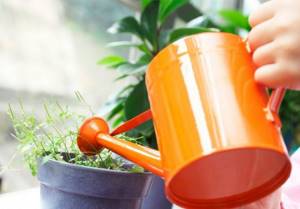
Improper or uneven watering in winter
In a hot room, the soil in the pot dries out faster. If the plant is on a cold windowsill, the soil in the pot remains damp for a long time. It is in winter that house flowers can suffer from excessive watering - in the dark season, photosynthesis is reduced, growth is slowed down, and we, struggling with dryness, continue to water them abundantly, as in summer.
External manifestations on plants
A sluggish plant with moist soil in a pot. Avoid irregular watering, when the plant is either dried out or flooded.
How to help plants?
We water the plant only when the top layer of soil looks dry, regardless of how much time has passed since the previous watering: one day or two weeks. To do this, we often evaluate the moisture content of the soil - by touch. Without doing this, you cannot water! If the soil is too dry (typical of peaty soil), it is better to soak the plant: completely immerse the pot in water and let it sit until the release of air bubbles stops.
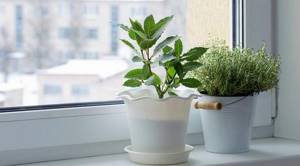
How and what to feed indoor flowers in the summer?
In summer, a period of intensive growth and flowering of plants begins, and not only indoors, but also garden and other outdoor flowers. At this time, it is important to provide them with active nutrition, which will make the flowers more resistant to heat and dry wind.
The best homemade fertilizers:
- Sugar. All living organisms need glucose. And our green brothers are no exception. Glucose supplies them with energy for growth, development and formation of buds. Therefore, sugar is ideal as a fertilizer. 1 tbsp. l. sand is dissolved in 0.5 liters of water, or 1 tablet of glucose is stirred in 1 liter. The product is used to water plants once a month.
Important! To avoid the formation of mold due to the use of glucose, it is recommended to combine homemade sweet fertilizer with EM preparations.
- Aquarium water. If there are fish in the house, then when replacing the substance of the aquarium, you should not pour out the waste water. It is good to water flowers with it, because such water contains many vitamins and minerals. Fertilizing is carried out no more than once a month, preferably in late spring - early summer.
- Coffee. Brewed coffee grounds are used. It is poured into flower pots in small quantities. When using it, you need to be careful, since coffee not only loosens the soil, but also acidifies it. Therefore, such feeding is not relevant for all flowers, and it should be used infrequently.
Carefully monitor the condition of your plants. If after feeding their condition worsens, you should stop using a certain type of home fertilizer!
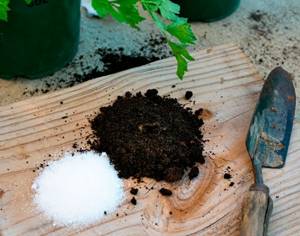
When treating plants with fertilizers, precautions must be taken
Lighting and temperature
Tropical plants are separated from the rest and placed in the warmest place with diffused lighting. They are often misted or otherwise maintained at high humidity.
Related article: 5 ways to decorate an old door
Light-loving plants such as cacti and crotons are placed on the windowsills of southern and eastern windows. It is appropriate to place ferns and philodendrons on whatnots, racks or shelves near the window.

Indoor plants cannot tolerate sudden changes in temperature, so try to maintain it at the same level, gradually reducing it to 15-17 °C.
How to fertilize flowers in autumn and winter at home?
In autumn, flowers in pots gradually go dormant. And in winter they practically stop blooming, with the exception of certain varieties. Therefore, feeding such crops is needed only to support immunity and health.
Homemade fertilizers:
- Succinic acid. Stimulates the absorption of nutrients by plants and strengthens the immune system. To prepare the solution, 1 tablet of the drug (which can be crushed into powder) is dissolved in 1 liter of water. The solution can be used for spraying and/or watering flowers, shrubs or indoor ornamental trees. In this case, flower or leaf plants are treated once a year, and trees, bushes, shrubs, cacti and succulents - no more than 2-3 times a year. It is preferable to do this in the cold season, but you can also perform the procedure in the summer.
- Eggshell. This remedy is still the subject of controversy among professional florists and botanists. However, the shell is a rich source of calcium, which plants definitely need. The dry mixture is used only when transplanting a crop or planting it in a pot in a permanent place. For this purpose, eggshells are crushed and mixed with soil. If you need to spray, then pour 1 part of the shell with 5 parts of warm water and leave for 2-3 weeks, stirring the liquid periodically. Use the infusion for watering once every 40 days.
Among the folk remedies, it is worth highlighting the following:
- Citrus peel. To use it in autumn or winter, it is recommended to start harvesting and drying in the spring and carry it out throughout the summer. Then place the peels in the jar so that they occupy 80% of the space in it. Next, the mixture is poured with boiling water and allowed to cool. The resulting concentrate is diluted with water in a ratio of 1:5, respectively. Use immediately before watering. Fertilizer can be applied once a month, in autumn and winter.
- Aloe juice. Many plants begin to wither or stop growing in the autumn-winter period. Aloe juice enriched with vitamins will help correct the situation. The leaves of the plant need to be cut off and placed in a cool place for 10 days. Then you need to squeeze the juice out of them and pour it over the plants that need feeding. Approximately 1 tsp is consumed for 1 flower. juice If the crop withers, water it once a week. If it is necessary to carry out manipulations for preventive purposes, it is enough to treat the plant once every 14 days.
Due to their high efficiency, folk recipes and homemade fertilizers for indoor crops are in great demand.
Planting flowers in September
What flowers are planted in September
In September, biennial flowers are planted - daisies, violas, forget-me-nots, Turkish carnations, foxgloves and others. In the first half of the month, small-bulbous crops are planted - snowdrops, scillas (scilla), muscari, crocuses, chionodoxes. From the beginning of the second ten days of September, they begin to plant bulbs - daffodils, and in the second half of the month - tulips. The turn of hyacinths begins at the end of September, although if you have a lot of worries, you can postpone planting hyacinths until the beginning of October.
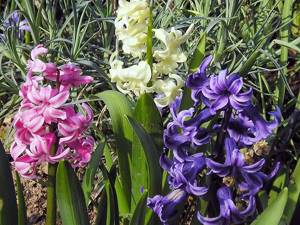
Planting biennials in open ground
If you grew seedlings of daisies, forget-me-nots, Turkish carnations, bluebells or pansies in the summer, then by September the seedlings should already be “ripe” for transplanting into open ground in places that should be prepared 3-4 weeks before planting. Biennials are planted at a distance of 20 cm from each other, and Turkish cloves and bluebells - at a distance of 30 cm. Tall mallows or foxgloves require an interval of 40 cm. If the soil is dry, after planting the seedlings in the ground, it should be watered generously and mulched with a layer of compost, humus or peat 3-4 cm thick.
- Amaranth: growing from seeds, types and varieties
Don’t forget to pinch the tops of the seedlings a week before planting so that the plants form a bush faster.
What garden flowers must be planted in autumn?
Planting perennials
In addition to seedlings of biennial plants, seedlings of perennials grown in a greenhouse - aquilegia, delphinium, yarrow, chamomile, echinacea, mallow, pyrethrum - are also planted at the same time. When planting, make sure that the soil does not get into the middle of the bush. After planting, water the seedlings generously, squeeze the soil around it and mulch it with humus, sawdust, peat or sand.

Methods of planting flowers
Before planting small bulbous plants, treat the planting material in a solution of foundationazole or other fungicide. The planting depth should be equal to three diameters of the bulb, that is, the larger the bulb, the deeper it should be planted. The bottom of the bulb placed in the hole should be directed straight down. Large bulbs are planted at a distance of 12 cm from each other, small ones - at intervals of 5-7 cm. If the weather is dry and warm, water the planting.
Fertilizer
By the end of September, biochemical processes in the cells and organs of indoor flowers slow down, respectively, at this time their fertilization is stopped. Otherwise, minerals will accumulate in the soil and negatively affect the root system.
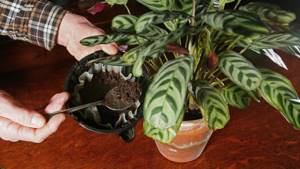
At the beginning of autumn, to strengthen the leaves and shoots, potassium phosphate fertilizer is applied to the soil for the last time. Organic or nitrogen fertilizers are strictly contraindicated.
Caring for indoor flowers in autumn (1 video)
How to care for indoor flowers in autumn (10 photos)
The best posts
- Screed thickness for water heated floors: tips for determining
- Test No. 23 Which member of the British royal family are you?
- Corrugated pipe for laying cables and wires
- Polyurethane ceiling cornices: advantages and possibilities
- Apartment interior for a young family with a child: options for arranging furniture in the rooms (39 photos)
- Foam cornices - “cheap and cheerful”
- Petunia in a flowerpot. Photo
- Where to go if the intercom does not work?
Related article: The most popular things that are in every apartment
